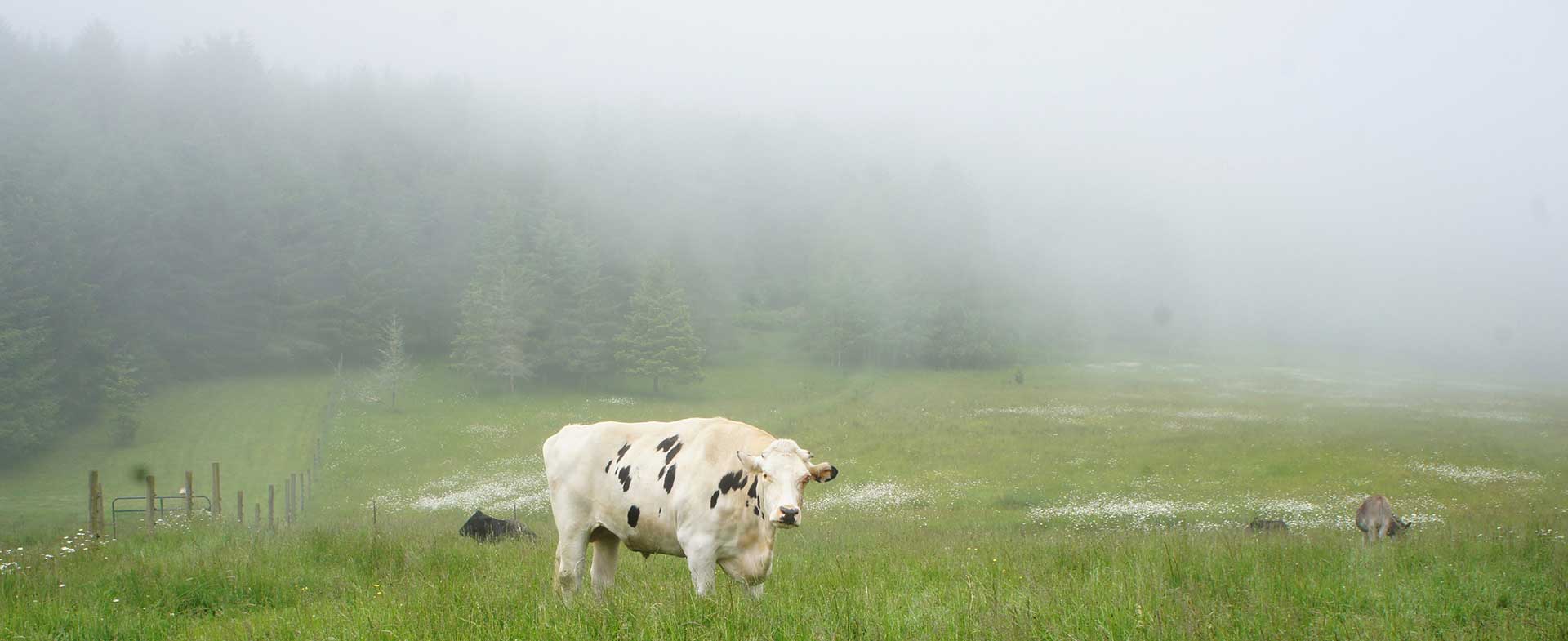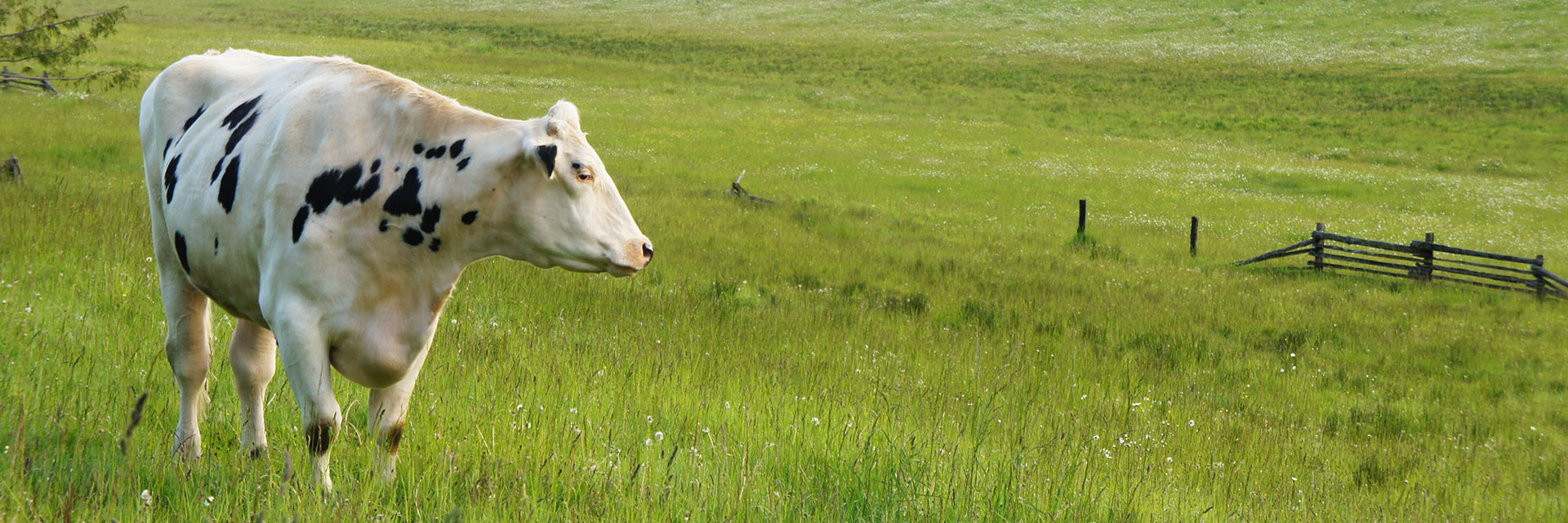
For many years, we have taken side trips to Skagit and Snohomish Counties to purchase corn and other vegetables. We always passed a number of dairy operations and spoke in particular to one dairy operator who had 500 milking cows. We asked about his male dairy calves and he replied they were born every day and picked up three times a week. He didn’t seem to know or care what happened to them as they were an inconvenience and there was little return on investment. He asked if we wanted one and mentioned Saturday mornings would be a good time to purchase one ($20).

On a cold Saturday morning in April, 2009, I called the dairy. The owner informed me that several good calves had been born that morning. He further stated his person-in-charge would show me the calves as he was leaving to go out of town.
I arrived at the dairy and attempted to speak to the Hispanic milking crew who spoke little English. The person-in-charge spotted me, said he would be with me shortly and disappeared. The herd was in the process of being milked and afterward the scrawny mother cows filed by me as I stood along the side of a narrow wooden corridor. Each female was identified by pierced ear tags in each ear. The commonly referred to “production units” continued to file by with their heads down as if on an automated treadmill. I could see the end led into a crowded dirt lot without cover where they would wait for hours until the next milking to relieve their abnormal loads of milk. Many had oversized udders and some were grotesque as the cows strained to keep them from hitting the ground.
I began to talk in a soft tone to many of the passing females who would stop and glance up with a depressed stare as they listened to the individual attention that was foreign to their existence. Some became nervous, picked up the pace and moved on. Others stopped, came closer and listened intently to every word. As our eyes met, they refused to move and, for a few seconds, there was a mutual connection and closeness. I believe they sensed I cared about them and their plight.
The person-in-charge appeared and I gave a last look at the long black and white line of gentle, enslaved captives, living such short lives of uncaring misery and total exploitation. At least now, I could focus on my intent of rescuing a newborn calf and allowing it to live in a natural environment among stands of fir, creeks, hills, and pasture with other cows of all ages and other species.
The person-in-charge took me to see three male calves born that morning that were only hours old. They lay on some straw outside under the roof of a pole-constructed building. One was dead and one’s hindquarters was covered with diarrhea which was a good indicator of impending death. The third calf looked sick, but its body was clean. The person-in-charge tried to lift him and he couldn’t stand as both legs buckled underneath him. He could only crawl on his two front legs. The person-in-charge said the crippled calf would be processed (slaughtered) on Monday.
I was upset and disgusted and knew the two living calves on the brink of death represented huge veterinary bills with little chance of saving one or the other. I told the person-in-charge I wasn’t interested and entered my van to leave. It was then I realized the cruel fate that awaited the crippled calf. Since he couldn’t stand, he would be dragged, head bobbing off the ground, to be loaded on the large livestock carrier. The same situation would apply when he was unloaded and pushed off the carrier. The use of an electric prod could not be ruled out to force him to speed up his crawl to the killing floor.
I again located the person-in-charge and told him I had changed my mind, paid for the calf and was given some colostrum (first mother’s milk containing high concentrates of antibodies to protect newborns) that had been taken from other cows that had presently given birth. I had him look up the calf’s mother’s number 530, which showed this was her second calf. She will give birth to two more calves and bellow and mourn as each one is taken from her. At five or six years old, this “spent” mother’s life will end as she will be slaughtered even though her natural life would be 20-25 years of age.
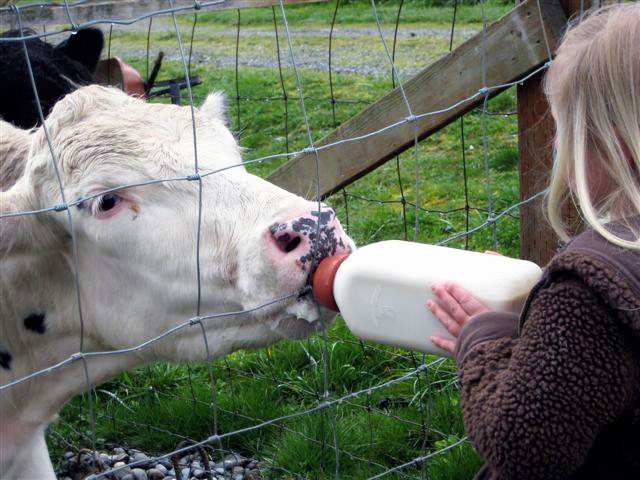
We picked up the flailing, crippled calf and got him into my van to begin the trip to our sanctuary. When we arrived, he was unloaded and placed in his own warm house under heat lamps. Later in the day, I made an attempt to force feed him life-saving colostrum. He was too sick to drink and the diarrhea began. The local vet came on Monday and the sick calf was given a series of shots to stop the diarrhea. He was force fed some colostrum which loses its effectiveness after 24 hours of birth. Fortunately, the diarrhea lessened, but the calf could still not stand. Despite his inability to walk, he displayed incredible energy and never stopped crawling on his bed of straw.
The vet gave the calf powerful shots to loosen the tendons in both front legs which proved unsuccessful. I contacted the dairy to gain some insight as to his condition. The assistant manager gave several possible reasons and told me to bring the calf back and pick out another one. He did, however, stipulate that if a vet had given him shots, the residue would make it impossible to slaughter him for human consumption so they wouldn’t take him back. I asked that, if he hadn’t been given the shots and due to his classification as a downer, would the slaughter plant process him into pet food. The assistant laughed and stated he would be processed and sold to some of Seattle’s finer restaurants (so much for the downer law to protect the consumer from Mad Cow disease).
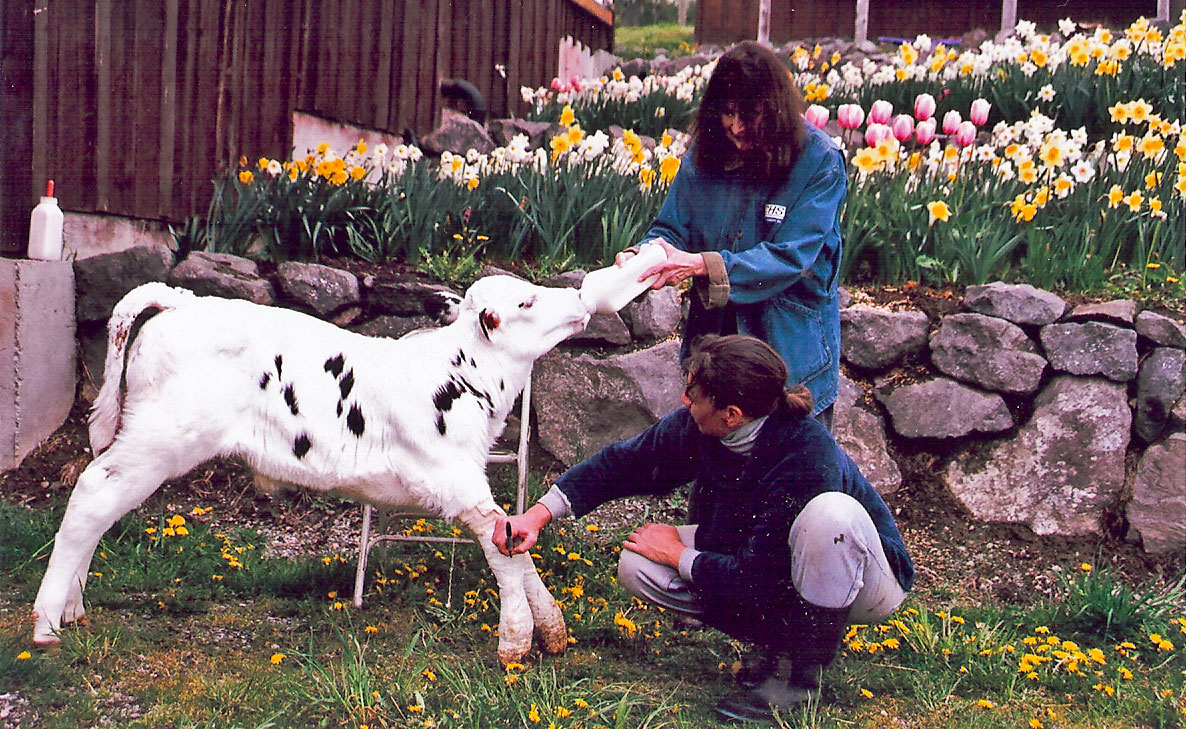
After repeated shots, the calf still couldn’t stand and the vet felt uncomfortable continuing the shots as they could have already affected his kidneys. Several days later with no improvement, the vet and I made the decision to totally anesthetize him, straighten his legs by applying incredible pressure on them while casts were made and put on both legs. After two weeks, they were removed and the calf painfully attempted to stand for a few seconds and then fell as he felt more comfortable crawling. More weeks passed and gradually he began to stand with his ankles and hooves abnormally turned outward. He slowly remained upright longer and began to walk. What a relief and so close to being put to death.
We named the calf Casper due to his almost purely white coat at birth. Casper has a personality vastly different from any other calf we have rescued. He is very aggressive and not gentle like the others. For months he was preoccupied with head butting which made it difficult to enter his enclosure.
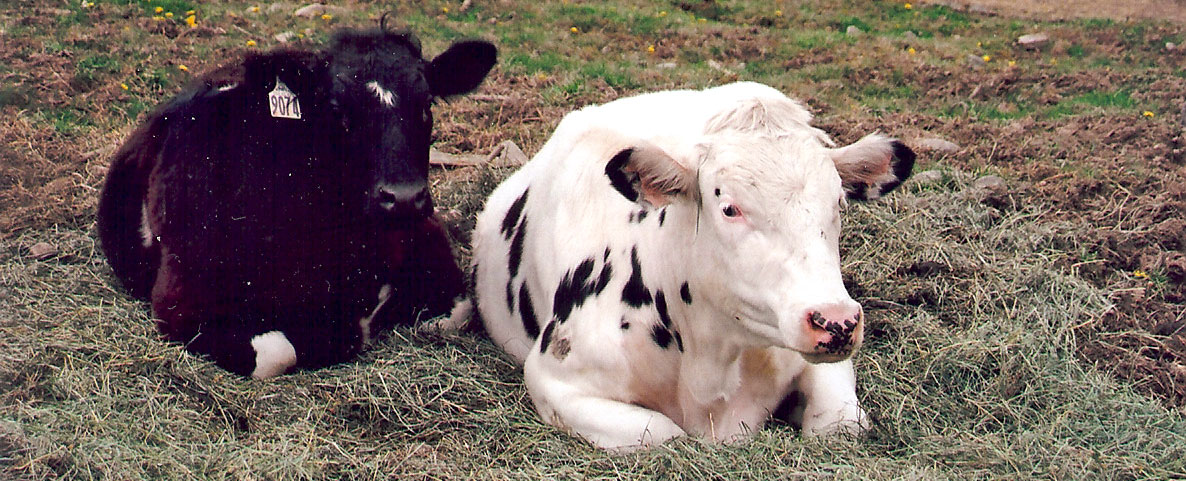
Casper was moved in August to a large fenced area that contains numerous apple trees. He continued to head butt those who would enter in addition to mounting anyone who turned their back on him. Casper had never really seen another cow until October when we put a rescued beef calf near his age named Tiny in with him. They became fast friends and the head butting has subsided. He enjoys being petted, but you still can’t turn your back on him.
In April of this year, Casper and Tiny will be moved to their final location with the other cows, horses, burros and mule. It will be a big adjustment for Casper who has received special treatment and continues to be bottle fed. Somehow, against all odds, Casper was chosen to live and given the opportunity to experience a happy life and a natural death.
“All beings tremble before violence.
All fear death, all love life.
See yourself in others.
Then whom can you hurt?
What harm can you do?”
— Buddha
